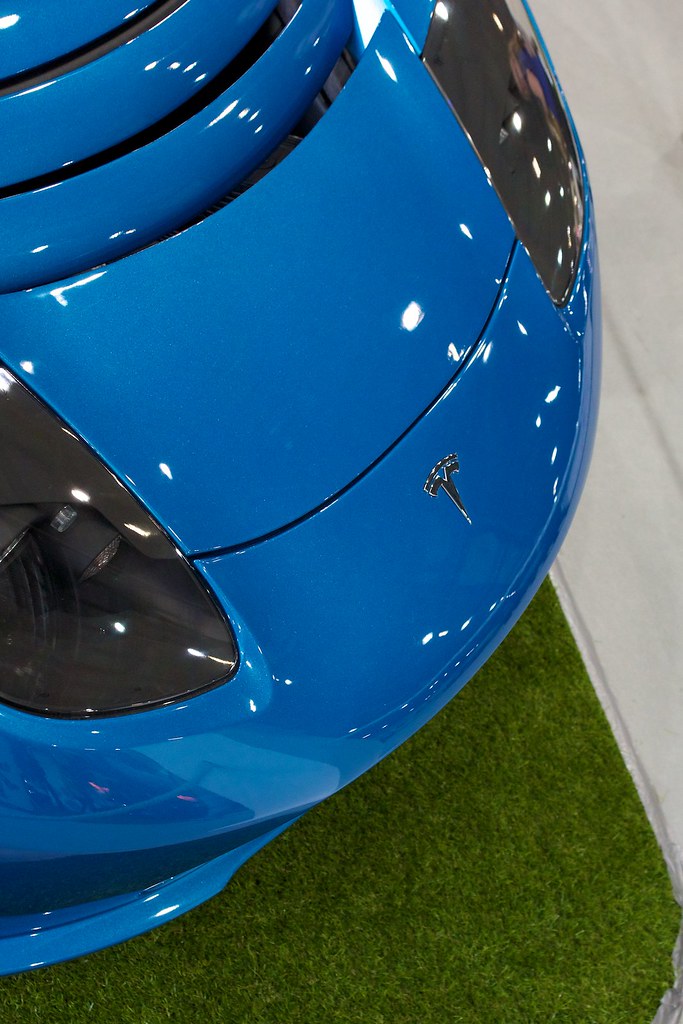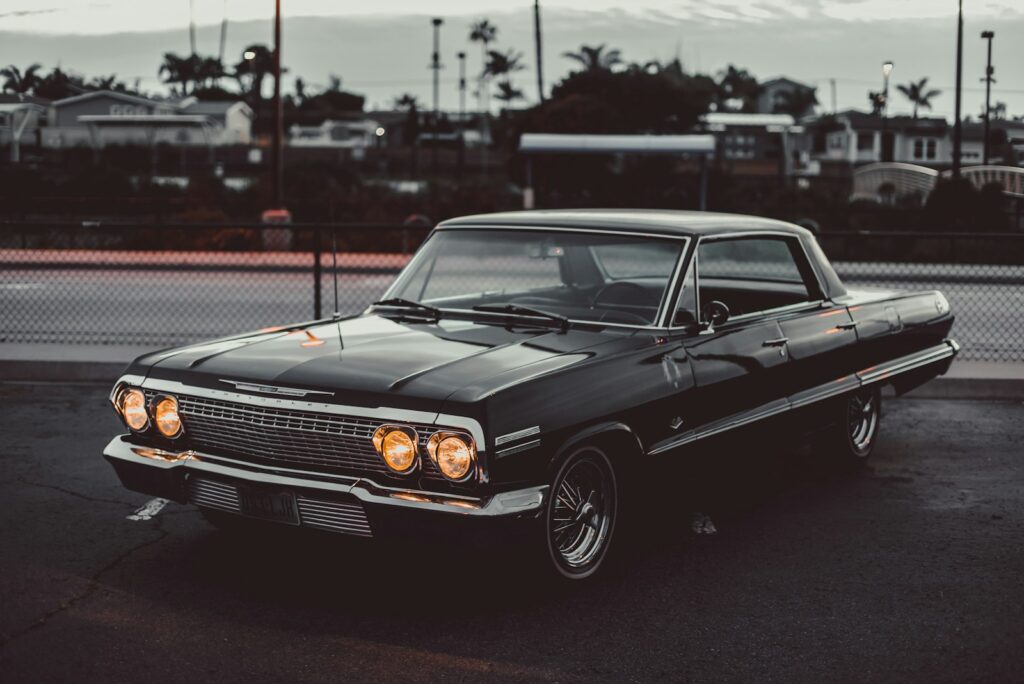
There was a time, not so long ago, when American roads were defined by the cars that drove on them. It was a glorious era of power, chrome that could blind a low-flying aircraft, and swagger that would make a rock star blush. This was when the Motor City did more than just lead the way; it was the highway, forging a path for an entire nation’s automotive dreams.
From the post-war boom, when America put its foot down and said, “We’re going cruising!”, right through the golden age of muscle cars, where horsepower was a religion and tire smoke was incense, Detroit’s automakers produced vehicles that became cultural icons, defining what it means to be an American. These magnificent machines came roaring off assembly lines with bold styling that could stop traffic, innovative features that made your jaw drop, and a distinctly American attitude that turned heads everywhere it went and captured imaginations around the world. Forget subtlety; these cars were designed to be noticed.
We’re talking about the kind of cars that graced every garage calendar, rumbled ominously in drive-in movie lots while teenagers tried to get some privacy (good luck with that loud exhaust), and demanded attention at every red light, daring anyone to try and beat them off the line. They were built to leave a mark, preferably a set of glorious black stripes on the asphalt. Whether it was their sleek fins that could double as landing gear, an aggressive stance that looked ready to eat small foreign cars for breakfast, or just pure, unfiltered, unadulterated cool, these cars told the world that American engineering wasn’t just about practicality — it was about pride, passion, and pushing the boundaries. In this first part of our two-section journey, we’re taking a joyride back in time to look at seven classic cars that owned Detroit’s heydey.

1. **Ford Model T (1908-1927)**: No discussion of Detroit’s automotive dominance can begin without acknowledging the revolutionary Ford Model T. This was not merely a car; it was the catalyst that transformed America into a mobile nation. Henry Ford’s genius lay not just in its design, but in the manufacturing process that made it accessible, a feat that fundamentally altered the economic and social fabric of the United States.
Ford revolutionized manufacturing when he established the Ford Motor Company in 1903, but his greatest innovation came in 1913 with the moving assembly line at the Highland Park plant. This ingenious system dramatically reduced the time to build a Model T from 12 hours to just 93 minutes. Such efficiency made mass production a reality, a principle that would eventually be adopted by industries worldwide.
His commitment to paying workers $5 per day—double the standard wage—shocked competitors but created a new middle class of workers who could afford the very cars they built. This visionary business model transformed Detroit’s economy and population, attracting migrants from across America seeking well-paying manufacturing jobs. The Model T’s affordability, priced at $850 in 1908 and dropping to $300 by 1925, put automobiles within reach of average Americans for the first time, making personal transportation accessible nationwide and laying the groundwork for the modern car culture.
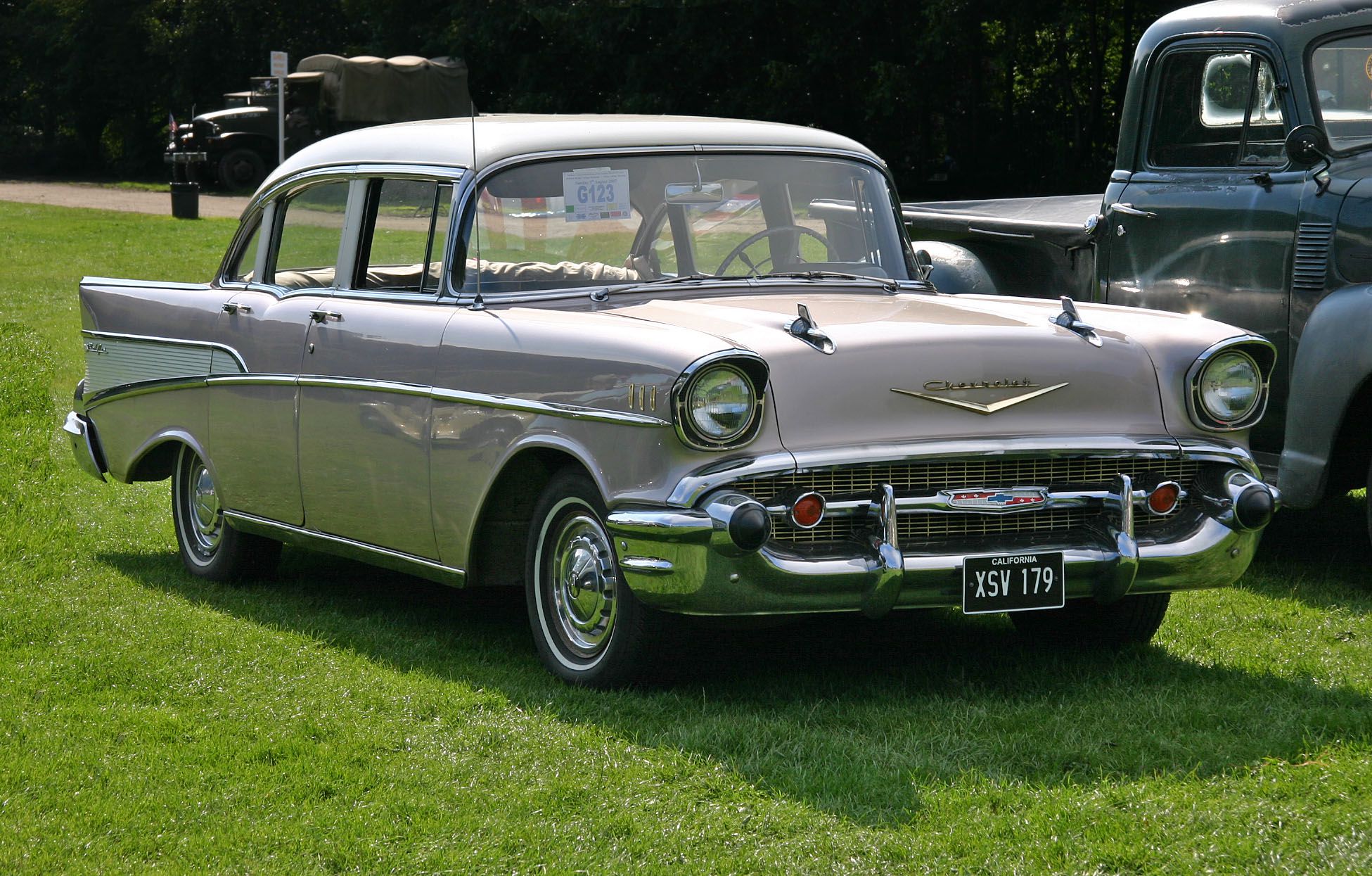
2. **1957 Chevrolet Bel Air**: The 1950s were a transformative era for automobiles in America, and if one car encapsulates the exuberant optimism and signature styling of the decade, it is undeniably the 1957 Chevrolet Bel Air. This machine wasn’t just transportation; it was a rolling sculpture, a statement of prosperity, and a definitive symbol of the era’s post-war confidence and technological fascination.
By 1955, Americans owned more than 50 million cars, nearly one for every three citizens, a testament to the post-war economic boom. The Bel Air, with its distinctive fins and chrome details, epitomized the era’s flamboyant design philosophy. Its instantly recognizable silhouette, often featuring two-tone paint schemes and rocket-inspired hood ornaments, set a standard for automotive aesthetics that captured the nation’s imagination.
Beyond its eye-catching looks, the Bel Air also offered performance. Available with powerful V8 engines, it provided a thrilling driving experience that matched its audacious styling. It perfectly blended form and function, embodying the freedom and technological progress that cars had come to represent in the American psyche. The 1957 Bel Air remains an enduring collector favorite today, a chrome-laden monument to a golden age.
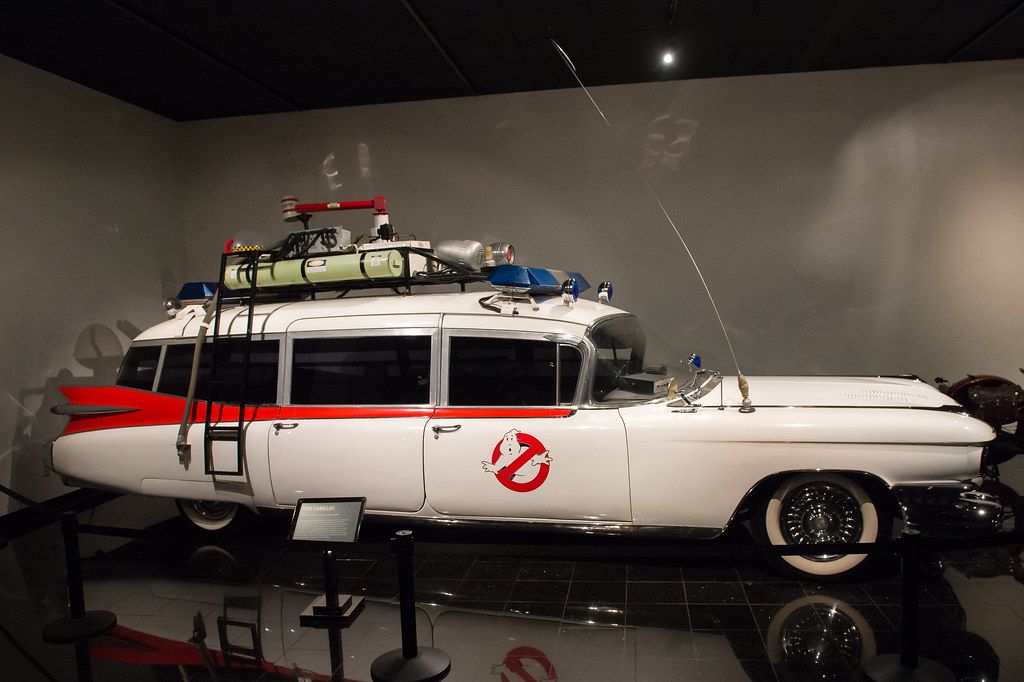
3. **1959 Cadillac**: While the Bel Air represented the mainstream of 1950s exuberance, the 1959 Cadillac pushed design boundaries to their absolute extreme, becoming the undisputed king of tailfins and a symbol of opulent American luxury. Cadillac led the fin revolution, with designs by the legendary Harley Earl pushing boundaries each year. The 1959 model became the ultimate expression of this trend.
By 1959, Cadillac tailfins reached their most extreme expression, standing nearly as tall as the roof, a flamboyant nod to the jet age that captivated the public. These weren’t subtle aerodynamic aids; they were architectural statements, proclaiming a future of speed and flight. Paired with abundant chrome trim and massive bumpers, the Cadillac of this era wasn’t just a car; it was a land yacht, a parade float of American industrial might and prosperity.
Chrome, in particular, was more than merely decorative. It symbolized America’s industrial might and the era’s prosperity, adorning every available surface and glinting under the sunlight. The 1959 Cadillac, especially the iconic Eldorado Biarritz, remains a highly coveted classic, a testament to a time when automotive design was less about efficiency and more about unbridled, audacious artistry.
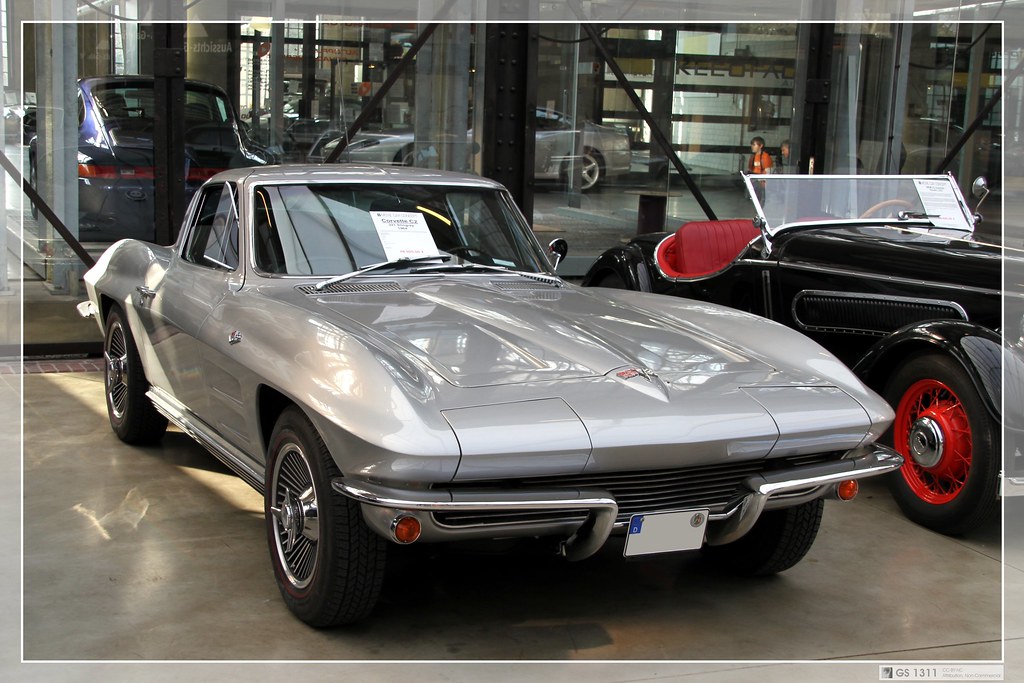
4. **1963 Chevrolet Corvette Sting Ray**: As America transitioned into the 1960s, automotive design evolved, moving from the flamboyant excesses of the fin era towards sleeker, more sophisticated forms. The 1963 Chevrolet Corvette Sting Ray stands as a pivotal example of this shift, marking a significant leap forward in American sports car design and engineering. It was a car that instantly became an icon, proving that American performance could also be exquisitely beautiful.
Introduced in 1963, the Sting Ray featured a revolutionary, sharp-edged design that drew inspiration from European sports cars but maintained a distinctly American muscularity. Its most distinctive element was the split rear window, a design flourish that has since become one of the most highly prized features for collectors. This design, combined with hidden headlamps, gave it a futuristic and aggressive stance that captivated enthusiasts.
Beyond its striking aesthetics, the 1963 Sting Ray also delivered on performance. It introduced independent rear suspension for the first time on a Corvette, significantly improving its handling and ride quality. With powerful small-block V8 engines, the Sting Ray offered exhilarating acceleration and a driving experience that cemented the Corvette’s reputation as America’s true sports car, an innovative and enduring symbol of American engineering prowess.

5. **Ford Thunderbird (Early 1960s Models)**: While the Corvette Sting Ray carved out its niche as America’s purebred sports car, Ford’s Thunderbird evolved to dominate a different, yet equally significant, segment of the market: the luxury personal vehicle. The Thunderbird’s journey from a two-seater sports car to a sophisticated four-seater luxury cruiser in the early 1960s perfectly captured America’s evolving tastes, proving that buyers desired both performance and unparalleled comfort.
The “Bullet Bird” (1961-1963) and “Flair Bird” (1964-1966) generations of the Thunderbird epitomized this blend. With their sleek, aerodynamic lines and powerful V8 engines, they offered a driving experience that was both exhilarating and refined. The Thunderbird provided a grand touring experience, making long-distance travel stylish and enjoyable, a stark contrast to the more utilitarian vehicles of the time.
Its success proved Americans wanted a car that could deliver both performance and comfort, a vehicle that reflected their aspiration for a luxurious lifestyle. The Thunderbird became a symbol of personal achievement and sophistication, with its distinctive styling and well-appointed interiors. It established a new category in the automotive landscape, influencing countless designs that followed and further cementing Ford’s reputation for innovative market segmentation.
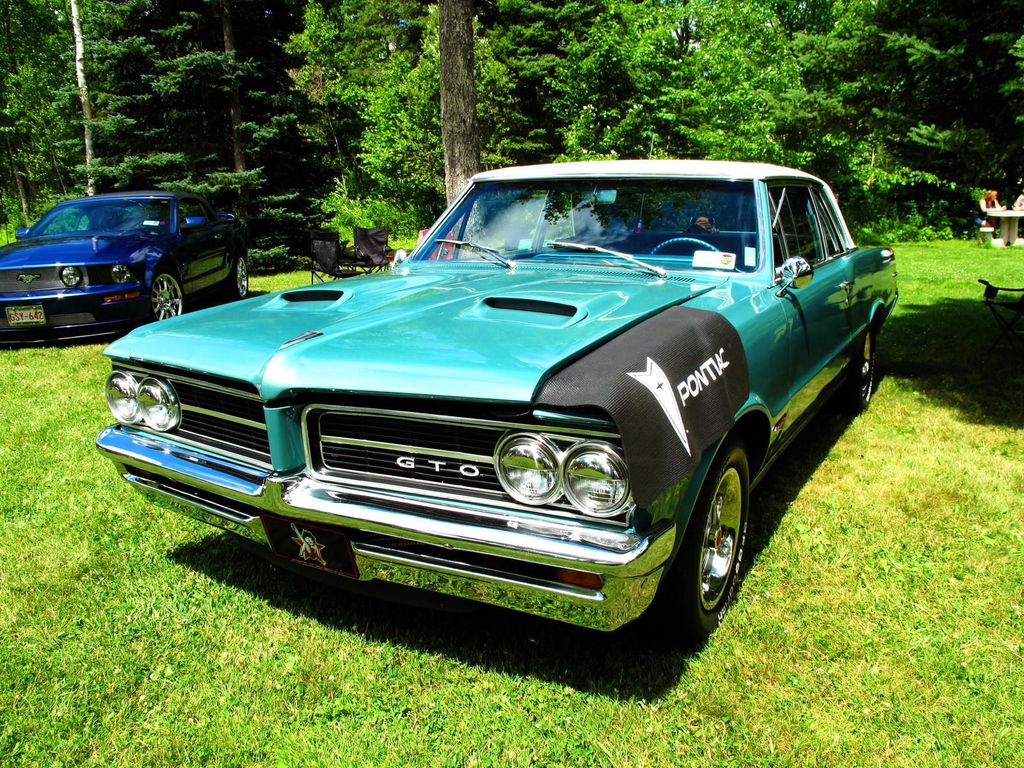
6. **1964 Pontiac GTO**: The roar of a powerful V8 engine being dropped into a relatively modest mid-size car body signaled the official birth of an automotive legend: the muscle car. This revolutionary moment occurred in 1964 when John DeLorean and his team at Pontiac boldly introduced the GTO, a car that didn’t just break rules, but rewrote the entire playbook for American performance vehicles. It truly ignited the horsepower war that would define the next decade.
Pontiac’s move effectively bypassed General Motors’ internal rules limiting engine size in midsize cars. By installing a massive 389-cubic-inch V8 into the Tempest, they created an affordable high-performance machine that resonated deeply with America’s young, affluent post-war generation. With disposable income and low gasoline prices, this demographic was hungry for speed and style, and the GTO delivered in spades.
The GTO’s success was immediate and staggering, with first-year sales reaching 32,450 units—more than triple Pontiac’s initial projections. Affectionately dubbed “The Goat” by enthusiasts, it proved that extraordinary performance didn’t have to come with an exorbitant price tag. This bold creation set the stage for an automotive arms race, inspiring other manufacturers to follow suit and launching an era of unprecedented street performance that captivated a generation of American drivers.
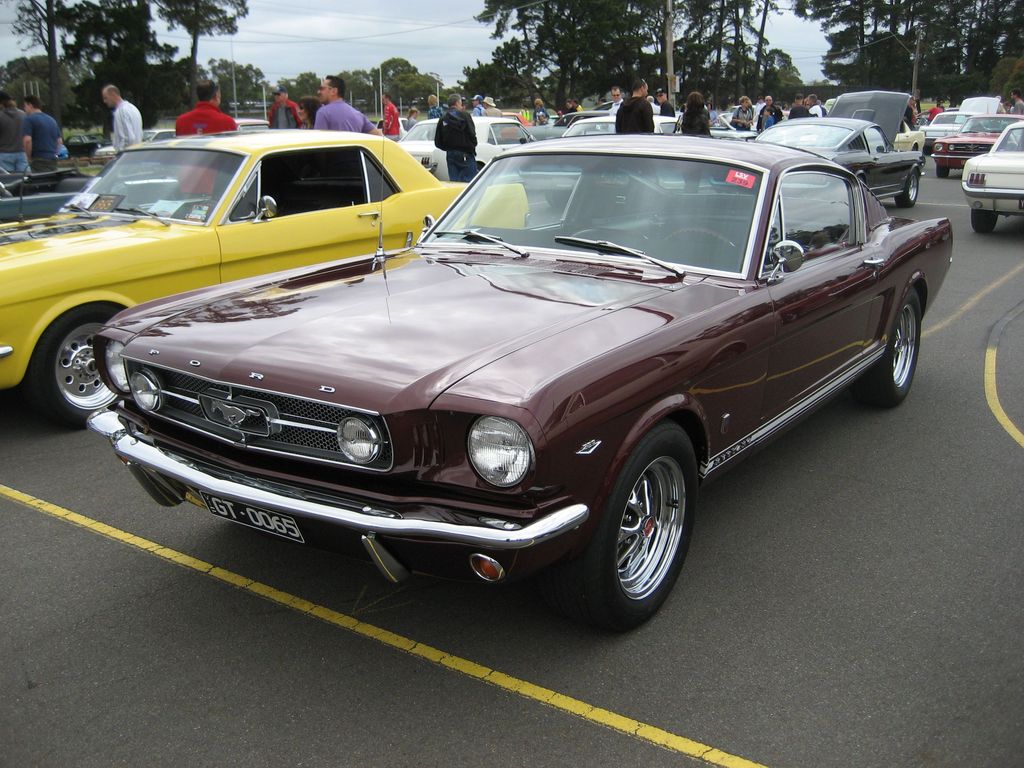
7. **1965 Ford Mustang**: If the Pontiac GTO ignited the muscle car era, the 1965 Ford Mustang turned it into a wildfire, democratizing performance and style for an entire generation. Introduced by Ford as a direct response to the shifting market dynamics highlighted by the GTO’s success, the Mustang wasn’t just a car; it was a cultural phenomenon that quickly became one of the best-selling vehicles in history.
Ford understood the appeal of performance, and by 1965, they had introduced the Mustang GT with its potent K-code 271-horsepower V8. What set the Mustang apart, however, was its perfect blend of sporty styling, customizable options, and an incredibly appealing price point, making it accessible to a massive segment of young buyers who craved individuality and speed. It created a new segment, the “pony car,” a term still used today.
With its long hood, short deck, and aggressive stance, the Mustang’s design was instantly iconic. It provided private spaces for teenagers away from parental supervision and became a status symbol that expressed independence, cementing its place in teen culture. The Mustang’s immediate and overwhelming success proved that the formula of accessible performance and aspirational style was a winning combination, forever changing the landscape of American automotive design and influencing countless models for decades to come.
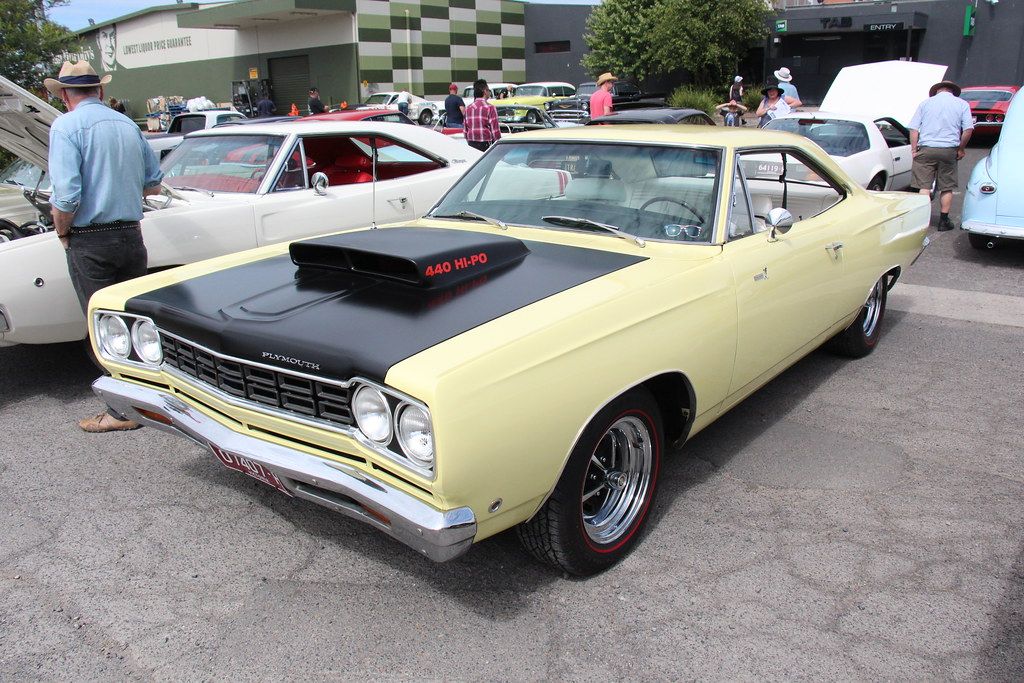
8. **1968 Plymouth Road Runner**: As the muscle car era truly hit its stride, automakers found creative ways to deliver raw performance to the masses. The 1968 Plymouth Road Runner perfectly exemplified this ethos, bursting onto the scene as a no-frills, high-performance machine designed for the “working man.” Its bold approach combined a modest package with the mighty 426 Hemi engine, signaling Plymouth’s serious intent to dominate the streets.
The Road Runner was revolutionary because it delivered supercar performance at a price point that was accessible to a wider audience. This commitment to affordable power, rather than luxury, resonated deeply with young buyers hungry for speed. With the formidable 426 Hemi engine, the Road Runner was capable of impressive quarter-mile times, often clocking in at around 13.5 seconds, earning it serious respect on the street and drag strip alike.
Plymouth leaned into its playful side with a Warner Bros.-licensed “beep-beep” horn and cartoon mascot, which captured the era’s lighthearted attitude while contrasting sharply with its serious performance capabilities. This unique blend of fun and ferocity made the Road Runner an instant classic and a cultural touchstone, proving that high-horsepower thrills didn’t require an exorbitant price tag. It truly showcased Detroit’s ability to innovate and respond directly to market demand for affordable speed.
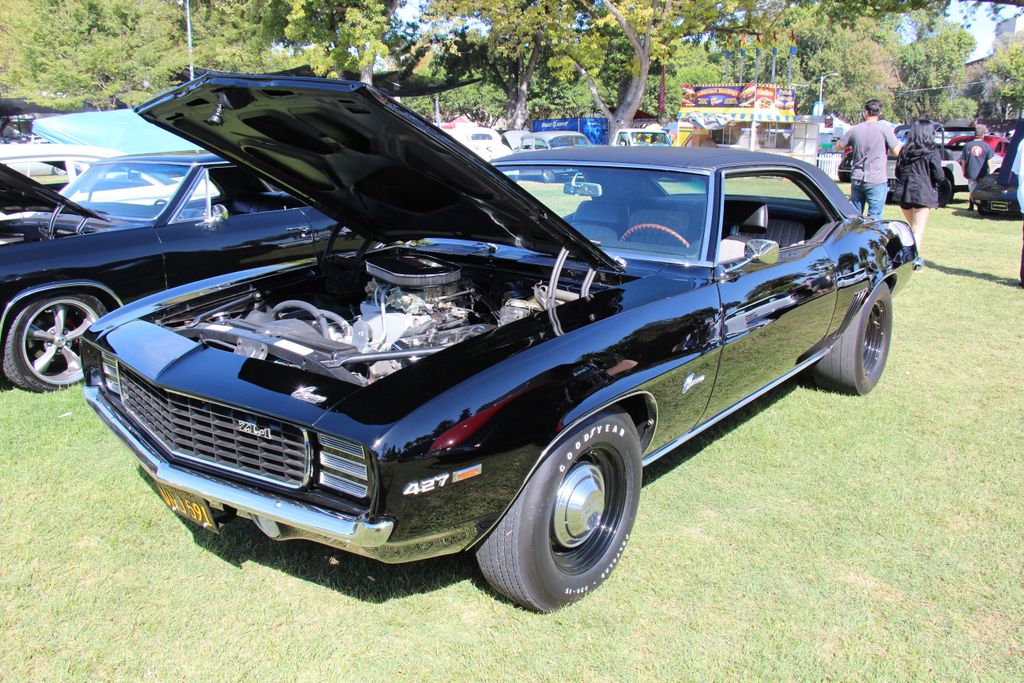
9. **1969 Chevrolet Camaro COPO**: While many muscle cars aimed for broader appeal, Chevrolet’s legendary COPO Camaros from 1969 existed in an exclusive realm, pushing the boundaries of what a street-legal car could be. COPO, or Central Office Production Order, was a special program that allowed dealers to bypass standard factory options and order highly customized, performance-focused vehicles not available in regular catalogs. These cars truly showcased the era’s relentless pursuit of automotive excess and power.
The most coveted of these COPO Camaros were equipped with the aluminum-headed 427 engine, an engineering marvel designed for competition but unleashed on the street. This particular engine configuration, which produced immense horsepower, created what many enthusiasts consider the ultimate street-legal muscle car of its time. Its sheer power output and specialized nature made it a formidable contender against any rival.
Rarity further amplified their legend; only 69 of these special-order 427 COPO Camaros were ever built. This extreme exclusivity makes them among the most valuable collector cars today, a testament to their engineering prowess and the audacity of Chevrolet’s designers and engineers. They were a direct answer in the intensifying horsepower wars, ensuring Chevrolet had a contender at the very top tier of performance.
The 1969 COPO Camaro represents the pinnacle of factory-sanctioned performance customization. It was a vehicle born from the intense competition and unbridled ambition of Detroit during its golden age, embodying a spirit of pushing limits that continues to captivate automotive enthusiasts decades later. These machines weren’t just fast; they were a declaration of uncompromising power.

10. **1970 Plymouth Hemi ‘Cuda**: The year 1970 marked the absolute zenith of the horsepower wars, and leading the charge for Chrysler was the ferocious Plymouth Hemi ‘Cuda. This car wasn’t just a vehicle; it was an apex predator of the asphalt, a definitive statement of power and aggressive styling. Equipped with the legendary Chrysler 426 Hemi engine, the ‘Cuda was one of the most powerful production cars ever made, a true testament to American engineering at its most extreme.
The 426 Hemi, renowned for its hemispherical combustion chambers, was rated at 425 horsepower, though many believe its true output was significantly higher. This colossal engine propelled the Hemi ‘Cuda with breathtaking acceleration, making it an undisputed king of the quarter-mile. The engineers behind it meticulously refined every component to handle such immense power, from its heavy-duty suspension packages to its robust drivetrain, ensuring that the car could translate its engine’s fury into usable performance.
Beyond its raw power, the 1970 Hemi ‘Cuda boasted a bold, distinctive design that made it instantly recognizable. Its aggressive grille, wide stance, and vibrant “High Impact” paint colors—like Limelight and Tor Red—ensured it turned heads everywhere it went. This car became a cultural icon, representing the unbridled optimism and technological prowess of America’s post-war era, a rolling sculpture that embodied the nation’s confidence.
However, the very elements that made it legendary also foreshadowed challenges. By 1970, insurance companies had already begun charging astronomical rates for high-horsepower vehicles, particularly for younger drivers, with premiums sometimes approaching half the car’s purchase price. This economic reality was an early warning sign, hinting at the external pressures that would soon impact the entire muscle car segment.
Today, the Plymouth Hemi ‘Cuda stands as one of the most highly coveted and valuable classic cars, commanding premium prices at auctions worldwide. It remains a symbol of an era when automotive design and engineering dared to dream big, pushing the limits of what was possible to create extraordinary machines that are still revered by enthusiasts as the pinnacle of American muscle.

11. **1970 Chevrolet Chevelle SS 454 (LS6)**: Matching the intensity of Chrysler’s Hemi offerings, Chevrolet unleashed its own beast in 1970: the Chevelle SS 454, particularly the formidable LS6 variant. This machine was a heavy hitter in the horsepower wars, equipped with the legendary Chevrolet 454 LS6 engine, which, like its rivals, was rated at an astonishing 450 horsepower. It was a direct declaration that GM was fully committed to the battle for muscle car supremacy.
The Chevelle SS 454 LS6 wasn’t just about raw power; it was a carefully engineered package designed for maximum street and strip performance. With its aggressive stance, functional cowl induction hood, and distinctive “SS” badging, it exuded an aura of authority. This vehicle offered a thrilling driving experience, capable of propelling itself down the quarter-mile in times comparable to the fastest cars of its day, establishing itself as a true icon of American performance.
Chevrolet ensured the Chevelle SS 454 delivered more than just speed; it combined bold styling with robust engineering. Innovations like heavy-duty suspension packages and racing-inspired gauge clusters were part of the LS6 package, providing both the aesthetics and the mechanics to back up its muscle. It embodied the spirit of the 1960s, a decade when American automakers embraced bold styling and cutting-edge performance.
The 1970 Chevelle SS 454 remains a highly sought-after classic today, a testament to its impact during Detroit’s golden age. It represents the era when American roads were transformed by groundbreaking vehicles, cementing Chevrolet’s reputation for producing powerful and iconic models that continue to influence car culture. Its place in history is secure as one of the most legendary performance machines from the peak muscle car years.
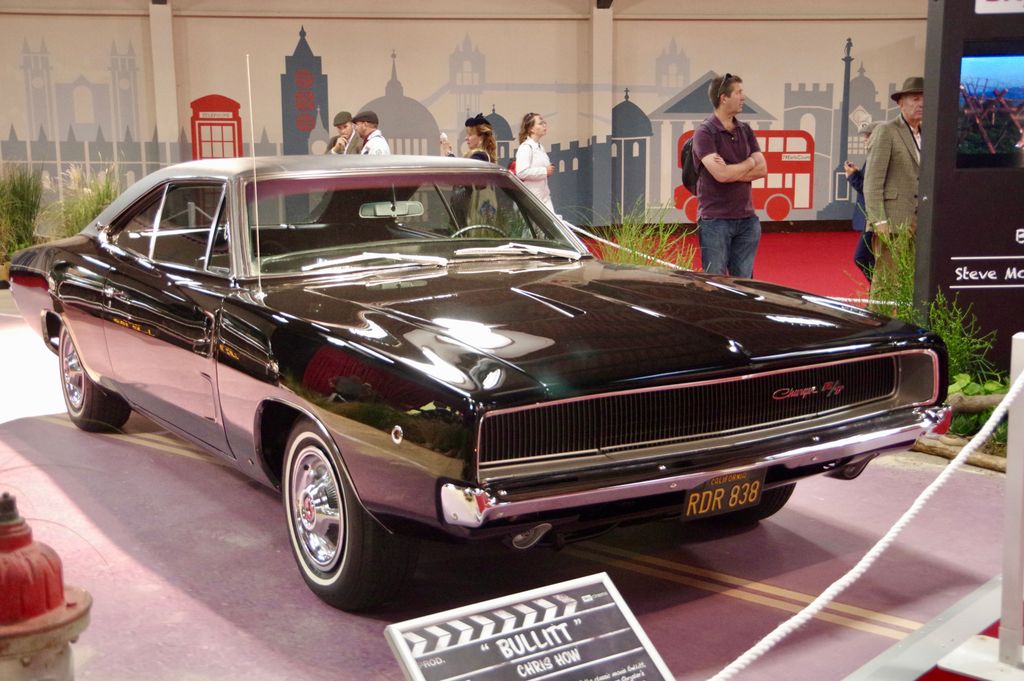
12. **1968 Dodge Charger**: Few cars encapsulate the raw, untamed spirit of the muscle car era quite like the 1968 Dodge Charger. While other models were explicitly built for drag strip dominance, the Charger blended menacing good looks with formidable power, quickly becoming a cultural icon that represented power, freedom, and individuality. It effortlessly dominated both the big screen and the street.
Its aggressive, unmistakable styling, characterized by the “coke bottle” waistline, hidden headlights, and the iconic full-width grille, gave it an undeniable presence. This bold design, coupled with a range of potent V8 engines—including the revered 426 Hemi and the robust 440 Magnum—ensured the 1968 Charger delivered performance that matched its intimidating aesthetics. It was a vehicle designed to be noticed and respected.
The Charger became deeply intertwined with American car culture, especially among teenagers and young adults. It provided those coveted “private spaces away from parental supervision” and became a powerful status symbol. Its rumble was a familiar sound in drive-in movie lots, embodying the spirit of independence and adventure that defined a generation. It transcended its mechanical purpose to become an expression of personal identity.
The 1968 Dodge Charger, along with its contemporaries, firmly established Detroit’s reputation for producing vehicles that captivated imaginations worldwide. Although the Charger later transformed into a personal luxury car as the muscle car era waned, its 1968 iteration remains the definitive image of raw, American muscle. It stands as an enduring symbol of a golden age when automotive design was less about efficiency and more about unbridled, audacious artistry.
The American muscle car era, though brief, carved an indelible mark on automotive history, a roaring testament to Detroit’s unyielding ambition and engineering prowess. From the raw, no-frills power of the Road Runner to the exclusive, track-bred fury of the Boss 429 and COPO Camaro, these machines were more than just cars; they were the embodiment of an era’s optimism and a generation’s craving for speed and style. They transformed American roads and imaginations, democratizing performance and cementing Detroit’s legacy as a global powerhouse of design and innovation. Even as external pressures like emissions regulations and oil crises ultimately brought an end to this golden age of unbridled horsepower, the spirit of these legendary vehicles lives on. Today’s performance cars, with their advanced technology and incredible power, stand as direct descendants of these icons, proving that while the original muscle cars may have faded into history, their powerful influence continues to shape the automotive landscape, inspiring new generations to dream big and push the boundaries of what’s possible on four wheels. The echoes of their thunderous V8s will forever reverberate through the annals of automotive greatness.


